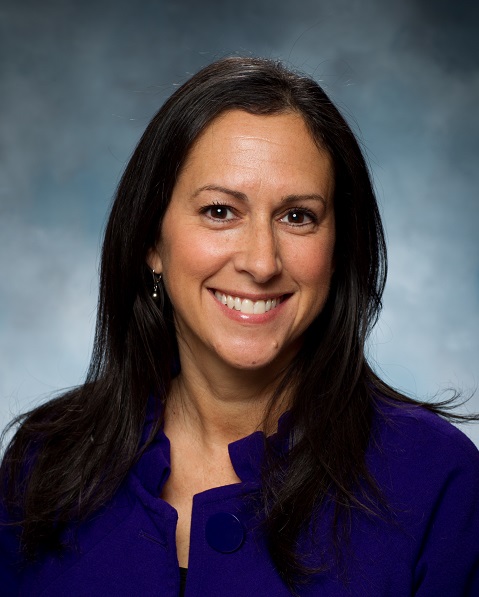 (New Brunswick) - Barbara Romito, MA, CCLS, Child Life Director at The Bristol-Myers Squibb Children’s Hospital at Robert Wood Johnson University Hospital and a Bedminster resident, serves as the primary author on a new policy statement for Child Life Services that was recently issued by the Committee on Hospital Care for the American Academy of Pediatrics.
(New Brunswick) - Barbara Romito, MA, CCLS, Child Life Director at The Bristol-Myers Squibb Children’s Hospital at Robert Wood Johnson University Hospital and a Bedminster resident, serves as the primary author on a new policy statement for Child Life Services that was recently issued by the Committee on Hospital Care for the American Academy of Pediatrics.The policy statement on Child Life Services, just released last week from the American Academy of Pediatrics, details all the unique and essential services that Child Life Specialists provide including psychological preparation, pain management and coping, and therapeutic play.
The policy includes groundbreaking benchmarking data for the profession utilizing a productivity metric for child life interventions with patients. The statement has research demonstrating the impact and value of child life services related to quality patient care and health care costs. It also presents strong recommendations for hospitals to ensure child life services are an integral part of pediatric health care.
View the Policy Statement on Child Life Services“The statement will be an important resource for all pediatric facilities to successfully meet the emotional and psychosocial needs of patients and families,” Romito notes.
Child life programs, which help engage children, from infants to teens, through play, talk and other tools to prepare children for health care and recovery, are growing across the country as research shows these programs are effective in delivering care and containing costs.
A new AAP policy statement, “Child Life Services,” published in the January 2021 Pediatrics (available online Dec. 28), updates the AAP’s 2014 policy on child life with new data, research and information about the continued expansion of child life services beyond inpatient hospitals.
There are more than 430 child life programs in North America, and while most are located in children’s hospitals, pediatric units, and emergency departments, today they are being added to radiology and imaging departments, dialysis centers, neonatal intensive care units, urgent care centers, psychiatric units, hospice programs, camps for children with chronic illness, rehab units, and outpatient dental and physician offices.
Child life programs address the psychosocial concerns of hospitalization and health care, which can include helping parents hold a young child during simple surgeries and even bereavement counseling, and this can impact the need for pain management and long hospital stays.
In studies, it was found patients who work with a child life specialist spent less time on narcotics, had slightly shorter hospital stays, decreases in post-traumatic stress, less fear and anxiety, better cooperation, better long-term coping and adjustment to future medical challenges, and caregivers were more satisfied.
Child life programs are also keeping up with new technologies like virtual reality and Internet devices to distract patients, reduce pain, and connect kids in hospitals to their schools, families and communities.
The new AAP policy also details some new challenges for child life specialists, including increasing numbers of children with special health care needs, which has risen to 18.8% of all children from 12.8% in 2001, and the increasing survival rate of patients with cystic fibrosis, cardiac conditions, spina bifida, cancer, and other chronic illnesses.
As children with special health care needs live longer, child life specialists play an important role in helping these young adults transition to adult health care.
Learn more about Child Life Services at Robert Wood Johnson University Hospital.